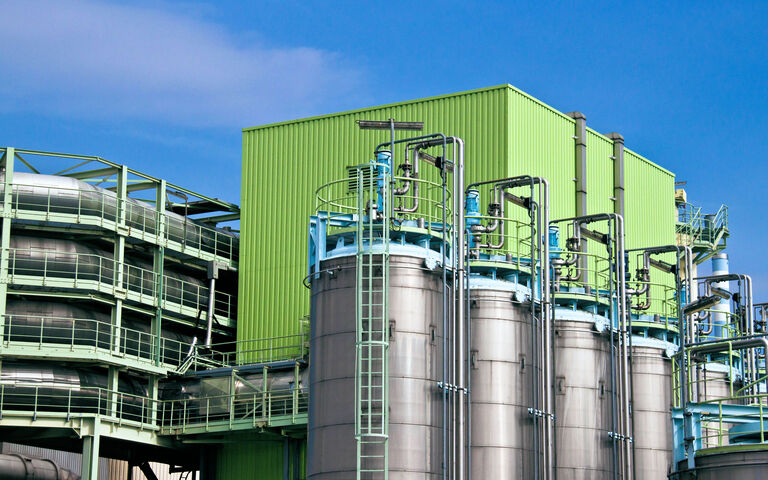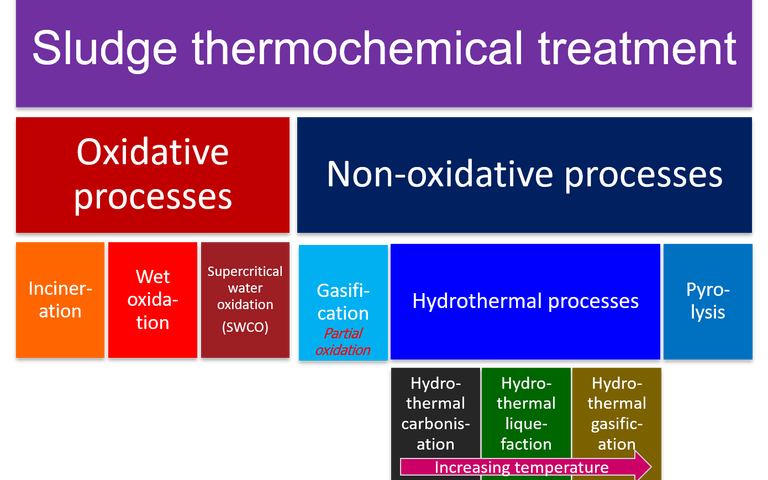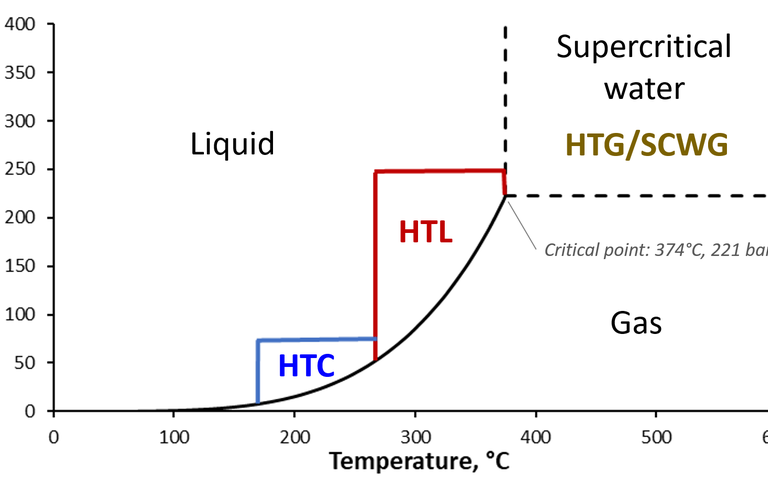
Sludge thermochemical treatment
An introduction to sludge thermochemical treatment methods
Your web browser is out of date.
Update your browser for better security, speed and to get the best experience on this website.
Hydrothermal gasification represents the highest-temperature hydrothermal process, operating at temperatures of up to ~550 °C, producing a gaseous product rich in hydrogen and/or methane. The process is sometimes referred to as supercritical water gasification, since temperatures exceed the critical point for water, and is thus analogous to supercritical water oxidation which operates in the same supercritical region but employs higher temperatures due to the exothermic nature of the oxidation reactions.

An introduction to sludge thermochemical treatment methods

Thermochemical methods are used for either degrading the sludge solids or pre-treating sludge upstream of anaerobic digestion

Various reactor configurations exist for sludge thermochemical treatment which vary in design, operation and application

An introduction to non-oxidative sludge thermochemical treatment methods

Hydrothermal sludge treatment employs elevated temperatures and pressures in wet conditions and in the absence of oxygen
A video to demonstrate the principles of the TerraNova® Ultra Hydrothermal Carbonization of sewage sludge.
Gasification is conversion at very high temperatures in a partial reducing atmosphere to generate a syngas product
Pyrolysis is the decomposition of organics at temperatures of 300-1300 °C in the absence of oxygen at atmospheric pressure
Hydrothermal processes employ elevated temperatures and pressures in wet conditions and in the absence of oxygen
Hydrothermal carbonisation converts sludge predominantly into a hydrochar solid product at temperatures of 180-300 °C
Hydrothermal liquefaction of sewage sludge takes place at temperatures of 250–400 °C and pressures above 40 bar
Oxidative methods for sludge thermal treatment comprise incineration, wet air oxidation and supercritical water oxidation
Non-oxidative thermochemical treatment of sewage sludge refers to treatment at elevated temperatures in the absence of oxygen
Thickening, dewatering and drying extract water from sludge to reduce the sludge volume
Sludge stabilisation − alkaline stabilisation, lime and solids dosing, plus anaerobic and aerobic digestion
Sludge is the main waste stream from the treatment of wastewater